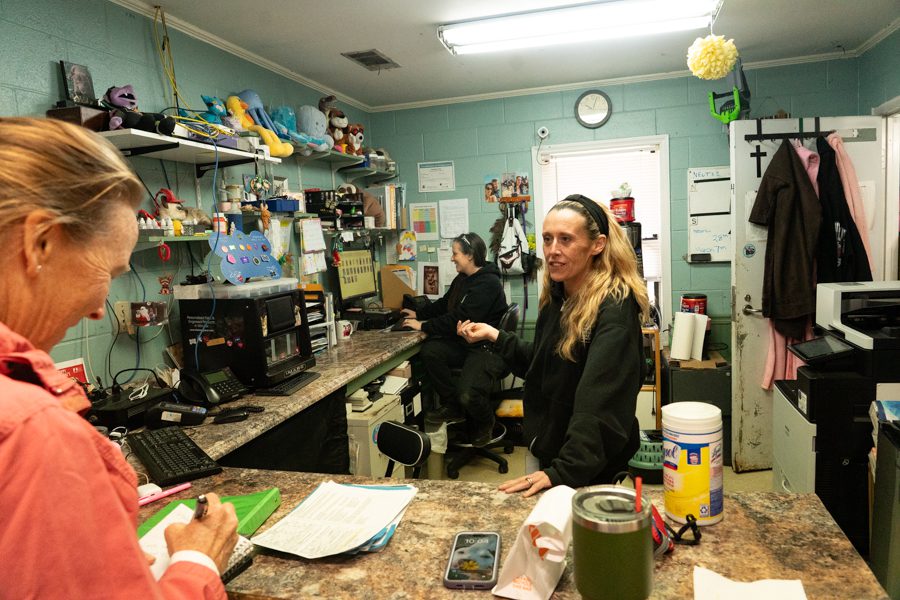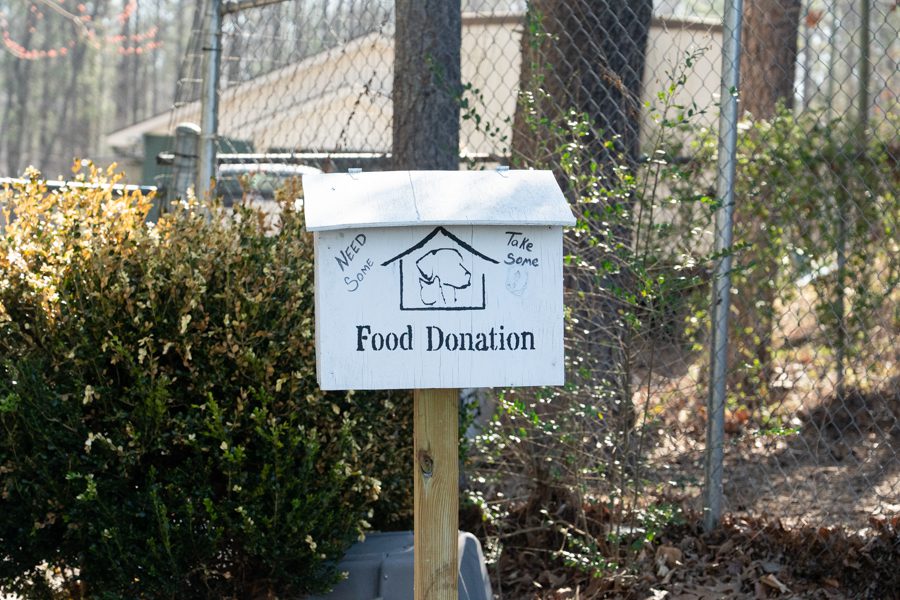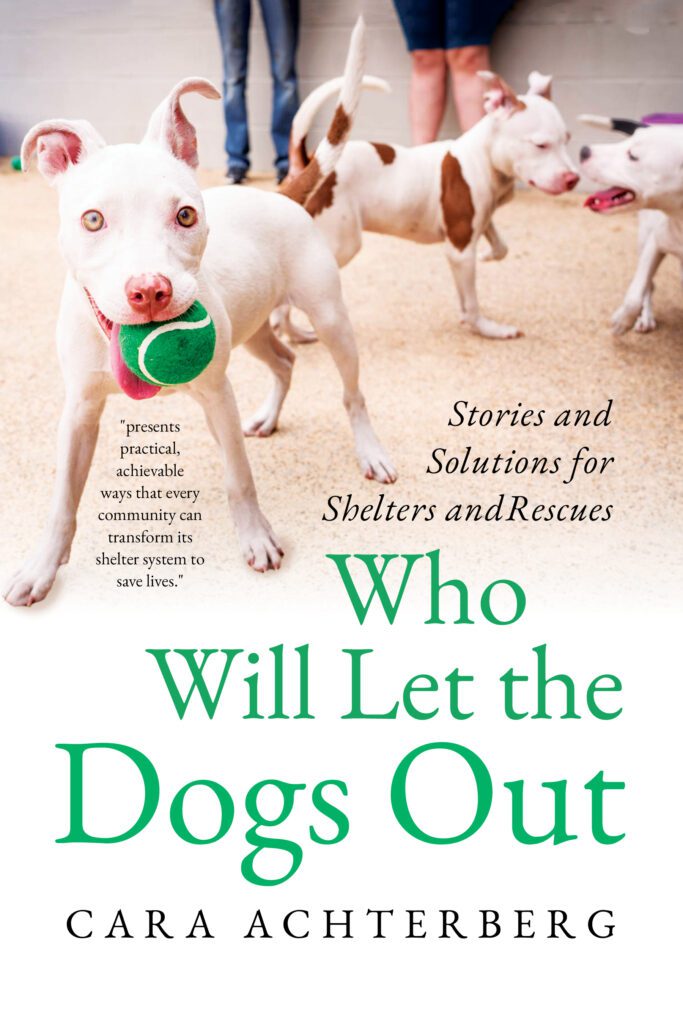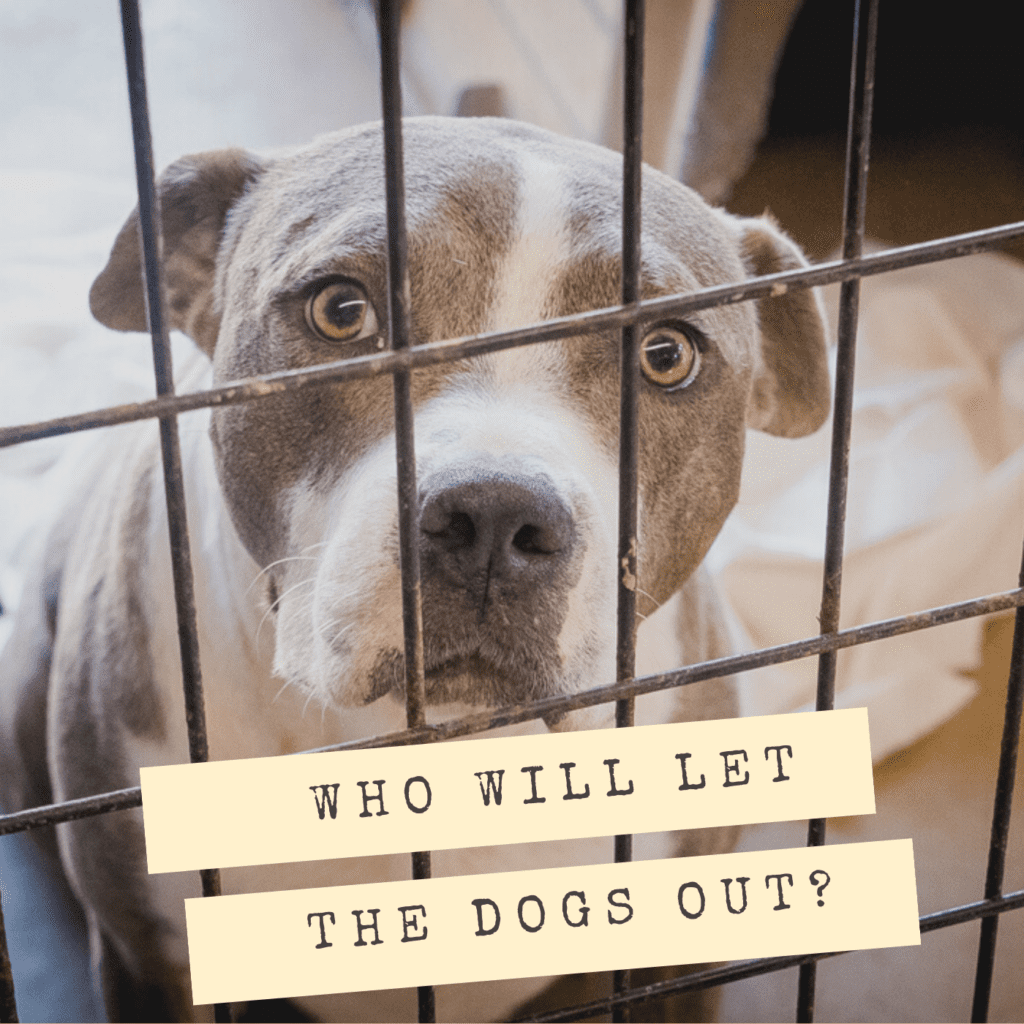We found the Habersham County Animal Shelter tucked behind the county fairgrounds in the woods. They’ve been in the same small building for over 25 years and have clearly outgrown it. The bathroom doubles as the filing/storage room, and while the spaces are small, they make the most of them. The building has 25 large dog runs, but they typically house 50-60 dogs utilizing every space they can (including the community cat spaces when we visited).

Madi has been the director since 2008. She originally came to the shelter for court-ordered community service after she ‘got in trouble,’ but then she never left. The animals changed the trajectory of her life.
Since she first set foot in the shelter, she’s gone through a 12-step program and the police academy. You’ll even find her here on Sundays with the animals, “Cause I have nowhere else to be.”
When I asked why she stays in the job despite the challenges and the heartbreak, she said, “I love my job.”

Pressed further, she confessed, “I know what it’s like to be unwanted.”
Olivia handles the administrative duties and pretty much anything else. “She’s my workwife,” Madi says. Olivia has been here for six years (despite being fired by Madi once). Brittany began as a disgruntled citizen and then a volunteer who challenged the staff regularly about everything, so Madi eventually hired her as an Animal Care Tech. We also met Lily, another Animal Care Tech, and Floyd, the lead kennel tech.



The shelter was relatively empty because they’d had a transport of 28 animals leave over the weekend. Transport is the lifeline for this shelter. Without it, they would have to euthanize a lot of animals. The shelter handled 1100 dogs in 2024. They do have to euthanize and the staff makes those decisions together, considering quality of life and every option they have.
They have very few local adoptions, and like so many southern shelters, they need to find ways to reduce their dependence on rescue.
HCAS has many good protocols for care, vaccinating and deworming on intake, performing some S/N surgeries with their mobile clinic, testing and treating for Heartworm at the shelter, and offering a drive-thru vaccine clinic for the public and giving out spay/neuter vouchers. Although the shelter practices preventative protocols, they proactively buy parvo-treatment drugs, so they are ready if a case breaks out.





HCAS has always been an open-intake shelter serving all of the county and all the municipalities within it. There is a food pantry box just outside their gate, and they’ve placed similar boxes in each of the towns they serve. Despite being open-intake, they counsel people who bring in animals to surrender and offer resources. The staff was expecting 6-8 owner surrenders that week from people who agreed to hold on to their animals until after this past weekend’s transport so that the shelter would have room.

Besides excellent rescue partners like Operation Paws for Homes and Defenders of Animal Rights Inc, they have a handful of foster homes, and the staff also often take home dogs when they’ve become attached and run out of options.
HCAS shelter is located in Clarksville, Georgia. It’s a cute little town surrounded by beautiful countryside with a mountain backdrop. Engaging the community will be the key to this shelter becoming less dependent on rescue. They do have a few partners already. The local Walmart gives them their broken bags of pet food, and Madi is on the radio station every week for Mutt Monday, giving an update on the shelter.
Madi thinks the challenge for HCAS and shelters like it is to change the perception of shelter dogs. One way to do that is for the shelter to be responsible about what kind of dogs they adopt out. Olivia goes into schools and hosts scouts and other groups at the shelter to educate them about the work of the shelter.
Brittany, a pittie lover like me, brought out Dash, a gorgeous, enormous, shiny seal-colored boy who weighed 80 pounds and had ears cropped to nearly nothing. He sat on command, mugged me for treats, and splattered spit all over Olivia. He is a sweet boy, but will need an adopter who can handle his huge presence. He’s not a fan of other dogs but hasn’t met a human he doesn’t love.

The shelter still has a handful of shepherds left from a hoarding case. Lily worked with one of them in the enormous shaded play yard. The staff has been trained in Dogs Playing for Life and has even traveled to another shelter to train the staff there to run play groups. They are lucky to have a volunteer named Laura who comes to the shelter faithfully two or even three days a week and gets every single dog out for a walk.



This experienced, dedicated staff, led by a woman who has made sheltering dogs her life’s work, offers the dogs of Haversham County first-class care and every chance at success. There is talk of a new building, but no definitive date. I hope that building gives them the space and visibility to share their work with this community to make them partners in caring for the animals in their midst.
As always, we’re happy to see open-intake shelters finding a way to save lives. It’s my personal belief that all municipal shelters should be open-admission shelters that serve as a resource for their community and the animals that need them.
If you’d like to encourage the staff of Habersham County and help them continue to offer excellent care for their animals, consider shopping their Amazon wishlist.
Or their Karunda Bed wishlist.
We head out on our next shelter tour next week! You can follow along on social media to see live videos, updates, and reports of the six shelters we will be visiting, plus Stronger Together South Georgia, our one-day event for shelter/rescues staff, volunteers, and advocates.
Find links to all our social media and multiple ways to donate on our Linktree!

Cara
If you want to learn more, be sure to subscribe to our email list to get the latest stories and solutions delivered to your inbox. And help us spread the word by sharing this post with others. Visit our website to learn more.
You can also help raise awareness by following/commenting/sharing our content on Facebook, Instagram, YouTube, and Tik Tok.

Who Will Let the Dogs Out: Stories and Solutions for Shelters and Rescues was published in January of 2025. It is filled with stories and ideas to help everyone be part of the solution. You can buy a hardback or paperback copy for yourself and/or buy a copy for a shelter or rescue through our website. It is also available on Amazon in paperback and ebook. We are looking for opportunities to share a presentation of the ideas in the book and facilitate conversations about how we can work together to find solutions for our shelters. If you have a dog-hearted group that would like to connect, contact Cara@wwldo.org.
To see our Emmy-nominated, award-winning short documentary, Amber’s Halfway Home, click here.

Did you know we have a podcast? I’m working at getting regular episodes up, including the audio version of the new book (narrated with additional info), and interviews with shelter heroes we meet. Find the podcast on Spotify and other podcast services.
For more information on any of our projects, to talk about rescue in your neck of the woods, or partner with us, please email cara@WWLDO.org.
And for links to everything WWLDO, including volunteer application, wishlists, and donation options, check out our Linktree.



Leave a Comment
Sign up for our newsletter
Sign up to have our latest news, grant updates, shelter visits, and more delivered to your inbox.
Share this:
Like this: